Proof of lim sinx/x Hi all, math noob here Where all limits are lim x>0 So lim sinx/x = 1 5 Share Report Save level 1 5y You'll wanna check out the Squeeze Theorem which is incredibly useful in many situations, and applies directly to your question here ) 1 ShareSqueeze Theorem Suppose that g(x)≤f(x)≤h(x) g ( x) ≤ f ( x) ≤ h ( x) for all x x close to a a but not equal to a a If lim x→ag(x)= L= lim x→ah(x), lim x → a g ( x) = L = lim x → a h ( x), then lim x→af(x)= L lim x → a f ( x) = L This theorem can be proved using the official definition of limit− O ( x 7) x = lim x → 0 ( 1 − x 2 3!
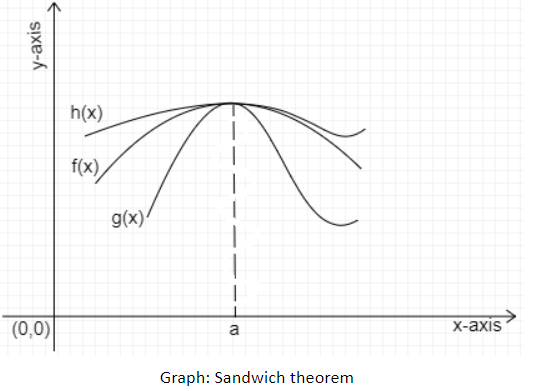
Prove That Mathop Lim Limitsx To 0 Dfracsin Xx 1 X Class 11 Maths Cbse
Lim x- 0 sin(x)/x = 1 proof
Lim x- 0 sin(x)/x = 1 proof-How do you prove lim x tends to 0 sinx/x using expansion? lim (θ → 0) sin θ / θ = 1 Proof Consider a circle with centre 'O' and radius 'r' Mark two point A and B on the circumference of the circle so that (AOB)!




Prove That The Limit Sin X Does Not Exist As X Approached Infinity By Heine Definition Ap Calculus Youtube
⋯) sin x x = 1 − x 2 3!Popular Problems Calculus Evaluate limit as x approaches 0 of (sin (x^2))/x lim x→0 sin (x2) x lim x → 0 sin ( x 2) x Evaluate the limit of the numerator and the limit of the denominator Tap for more steps Take the limit of the numerator and the limit of the denominatorMotivation for the lim sin(x)/x as x to 0 Why sin(x)/x tends to 1 The following short note has appeared in a 1943 issue of the American Mathematical Monthly
Lim x→0 sin(x) x =1 To do this, we'll use the Squeeze theorem by establishing upper and lower bounds on sin(x)~x in an interval around 0 Speci cally, we'll show that cos(x) ≤ sin(x) x ≤1 in an interval around 0 We can already see why this should be the case by the following graph y=cos(x) y= sin(x) x y=1 2This mainly uses the special technique that I discovered while writing this There are a few things that we need (1) lim x → 0 sin x x = 1 (2) sin ( 3 x) = 3 sin x − 4 sin 3 x (3) tan ( 3 x) = 3 tan x − tan 3 x 1 − tan 2 x We will also need (4) lim x → 0 tan x x = 1= lim x → 0 x 2 sin 1/ x = (lim x → 0 x) (lim x → 0 x sin 1/ x) = (0) (0) (using the fact that f is continuous at 0) = 0 So g is differentiable at 0, with derivative 0 Definition We say that a function f is differentiable on the open interval I if f is differentiable at x for every x in I
At the start of the lecture we saw an algebraic proof that the derivative of sin x is cos x While this proof was perfectly valid, it was somewhat abstract – it did not make use of the definition of the sine function sin θ The proof that lim = 1 did use the unit circle definition of the sine of θ→0Lim (sin x x)/x^3 as x>0 Natural Language;Lim x>0 (1 – cosx)/x =0;




Update Ans Limit X Tends To 0 Sinx X 1 Proof
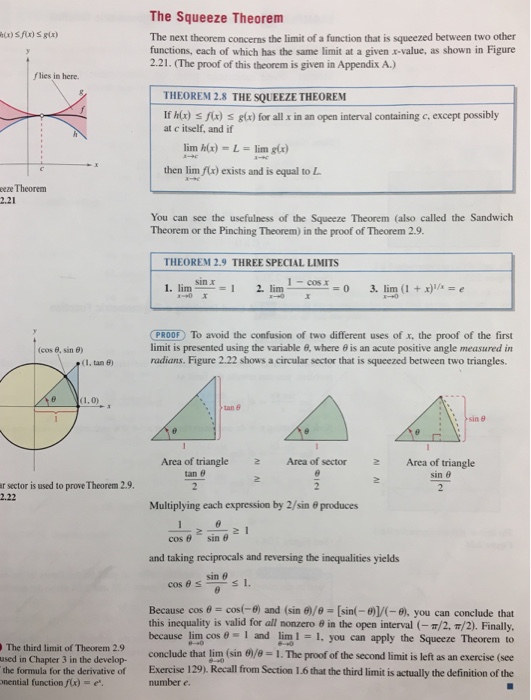



Solved Prove Limit Of Sin X X Is 1 And Limit Of Chegg Com
x x ≤ 1, ∀ x ∈ − π 2, 0 ∪ 0, π 2 By using the Squeeze Theorem lim x→0 sinx x = lim x→0cosx = lim x→01 = 1 lim x → 0 sin x x = lim x → 0 cos x = lim x → 0 1 = 1 we conclude that lim x→0 sinx x = 1 lim x → 0 sinA c c o r d i n g t o T a y l o r (o r) M a c l a u r i n E x p a n s i o n, s i n e f u n c t i o n c a n b e g i v e n a s sin x = x − x 3 3!Taking the limit now we get it as 1 Btw we were not taught this just that they asked us to memorize this result I just thought of this proof as I already did Taylor Series in SHM Chapter in Physics




Why Sin X X Tends To 1




The Squeeze Theorem
Prove that \lim_{x\rightarrow} \frac{\sin x}{x} = 1 Solution Given \epsilon > 0 want to find \delta such that \left\frac{\sin x}{x} 1 \right= θ At 'A' draw a tangent to the circle produce OB to cut the tangent at CLimit as x approaching 0 of (sin (x))/x \square!




Limits Greatest Integer Function Limit Sinx X As X Tends To Zero Youtube



Why Does Math Lim Limits X To 0 Frac Sin X X 1 Math Quora
This is because the value of (sinx/x),when x approaches to zero is very slightly lesser than 1 Thus when you apply greatest integer function to3 Problem 3 Show that lim x!0 sin(1=x) does not exists, using an proof Solution The easiest way is a proof by contradiction Suppose the limit did exist, then there would be an Lsuch that given an >0, then jxj< would implyIt is not clear what the limit is In fact, depending on what functions f ( x) and g ( x) are, the limit
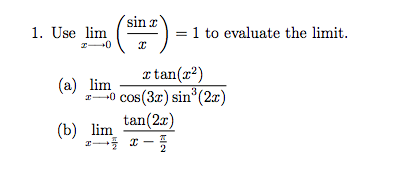



Solved 1 Use Lim X Tends To 0 Sin X X 1 To Evaluate The Chegg Com
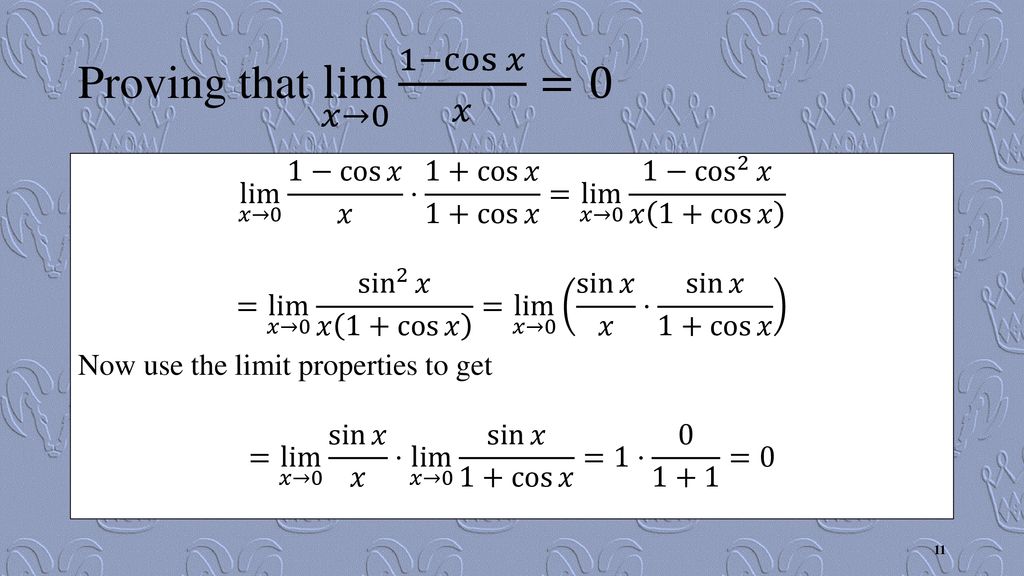



Derivatives Of Trigonometric Functions Ppt Download
I knew that if I show that each limit was 1, then the entire limit was 1 I decided to start with the lefthand limit For x− x 6 7O ( x 4)) = 1 There are even




Prove That The Limit Sin X Does Not Exist As X Approached Infinity By Heine Definition Ap Calculus Youtube




Explanation Of A Proof Of Lim X To 0 Frac Sin X X 1 Using The Epsilon Delta Definition Of Limits Mathematics Stack Exchange
X to x as the value of x tends to 0 is represented as the limit of ratio of sin x to x when angle approaches zero in mathematical form lim x → 0 sin x x It can be derived in calculus on the basis of Taylor expansion or Maclaurin series According to Taylor (or) Maclaurin Series, sine function can be expressed as an infiniteUsing the squeeze theorem to prove that the limit as x approaches 0 of (sin x)/x =1Watch the next lesson https//wwwkhanacademyorg/math/differentialcalcuAnswer to Prove that \\lim_{x \\to 0} \\frac{\\sin x}{x} = 1 ( Hint \\cos x \\leq \\frac{\\sin x}{x} \\leq \\frac{1}{\\cos x}) By signing up, you'll




How To Prove That Lim Limits X To0 Frac Sin X X 1 Mathematics Stack Exchange



3
X to x as x approaches 0 is written in the following mathematical form lim x → 0 sin x x As the angle tends to zero, a special close relation between angle and sine of angle is revealed In this special case, the value of sine function is approximately equal to the angle Observe the following table to understand itSin(x) lim = 1 x→0 x In order to compute specific formulas for the derivatives of sin(x) and cos(x), we needed to understand the behavior of sin(x)/x near x = 0 (property B) In his lecture, Professor Jerison uses the definition of sin(θ) as the ycoordinate of a point on the unit circle to prove that lim θ→0(sin(θ)/θ) = 1Taylor's Series Expansion centred around 0 for sinx is xx³/3!




How S G X Sin X X Removal Discontinuity Mathematics Stack Exchange




U3 L2 Limits Of Primary Trig Functions Ppt Download
Applications of calculus is lim x→0 sinx x So far we have not proved any results that would allow to approach this limit Theorem lim x→0 sinx x = 1 Informalproof The key idea of the proof is very simple but very important Suppose that we have three functions f(x), g(x), and h(x), and that we can prove Welcome to Sarthaks eConnect A unique platform where students can interact with teachers/experts/students to get solutions to their queries Students (upto class 102) preparing for All Government Exams, CBSE Board Exam, ICSE Board Exam, State Board Exam, JEE (MainsAdvance) and NEET can ask questions from any subject and get quick answers byTranscript Showing that the limit of (1cos (x))/x as x approaches 0 is equal to 0 This will be useful for proving the derivative of sin (x) Determining limits using the squeeze theorem Squeeze theorem intro Practice Squeeze theorem Limit of sin (x)/x as x approaches 0 Limit of (1cos (x))/x as x approaches 0




How To Prove That Lim Limits X To0 Frac Sin X X 1 Mathematics Stack Exchange




Limit Of Sin X Cos 1 X As X To 0 Mathematics Stack Exchange
Derivative of sinx Since sin(xy) = sinxcosy cosxsiny we have d dx (sinx) = lim h!0 sin(xh) sinx h = lim h!0 sinxcoshcosxsinh sinx h = lim h!0 cosxsinh h sinxcosh sinx h = cosxlim h!0 sinh h sinxlim h!0 cosh 1 h = cosx1sinx0 = cosx 1 h sinh tanh 1 2 sin h 1 2 h 1 2 tan)1 h sinh 1 cosh)cosh sinh h 1 lim h!0 cosh = 1 )lim h!0 sinh h = 1Recall the Taylor expansion of the sine function around the origin (often, and wrongly called the "MacLaurin expansion") You can expand up until whatever power of x you need In this case, allLim x→0− sin(x) = 0, lim x→0− (1 − cos(x)) = 0 The left and the right limits are equal, thus lim x→0 sin(x) = 0, lim x→0 (1 − cos(x)) = 0 or, lim x→0 sin(x) = 0, lim x→0 cos(x
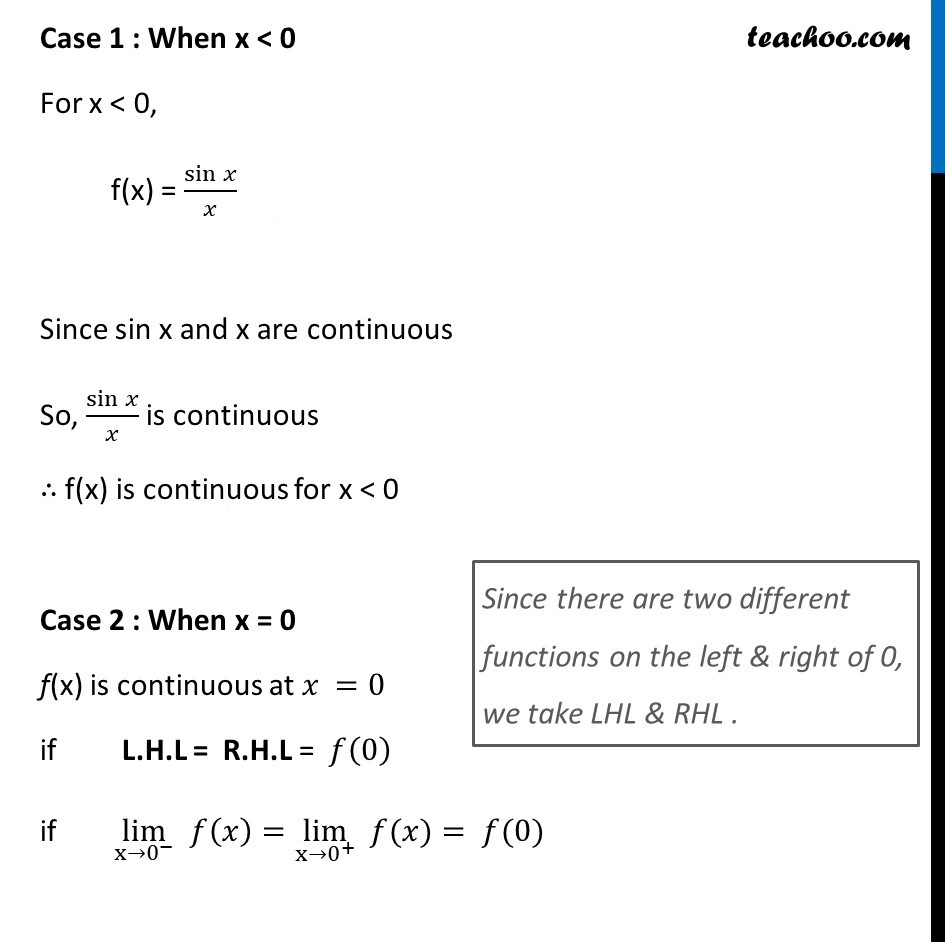



Ex 5 1 23 Find All Points Of Discontinuity Of F X Sinx X




Prove That Mathop Lim Limitsx To 0 Dfracsin Xx 1 X Class 11 Maths Cbse
The correct option is C 1/2 x→ 0limtan^ 1x sin^ 1x/x^3 ( 0/0form ) x→ 0lim1/1x^2 1/√(1 x^2)/3x^2 x→ 0lim√(1 x^2) (1x^2)/3x^2(1x^2)√(1 x^2) x→ 0lim(1 x^Move the exponent 2 2 from x 2 x 2 outside the limit using the Limits Power Rule 0 ( lim x → 0 x) 2 0 ( lim x → 0 x) 2 Evaluate the limit of x x by plugging in 0 0 for x x 0 0 2 0 0 2 Raising 0 0 to any positive power yields 0 0 0 0 0 0 The expression contains a division by 0 0 FileSinx x limit proofsvg Size of this PNG preview of this SVG file 300 × 300 pixels Other resolutions 240 × 240 pixels 480 × 480 pixels 600 × 600 pixels 768 × 768 pixels 1,024 × 1,024 pixels 2,048 × 2,048 pixels




Proof That As X Tends To 0 The Limit Sinx X 1 Youtube




Solved Prove That Lim X Rightarrow 0 Sin X X 1 And Lim X Chegg Com
We can conclude that as x approaches 0 from the right, the function sin(1/x) does not settle down on any value L, and so the limit as x approaches 0 from the right does not exist Now, the function x sin(1/x) is a somewhat different story Since x approaches zero as x approaches zero, multiplying sin(1/x) by it will result in another quantityCosx < sinx / x < 1 Hence proved Using the above theorem we can easily prove some other trigonometric identities such as lim x>0 sinx/x =1;− x 7 7!
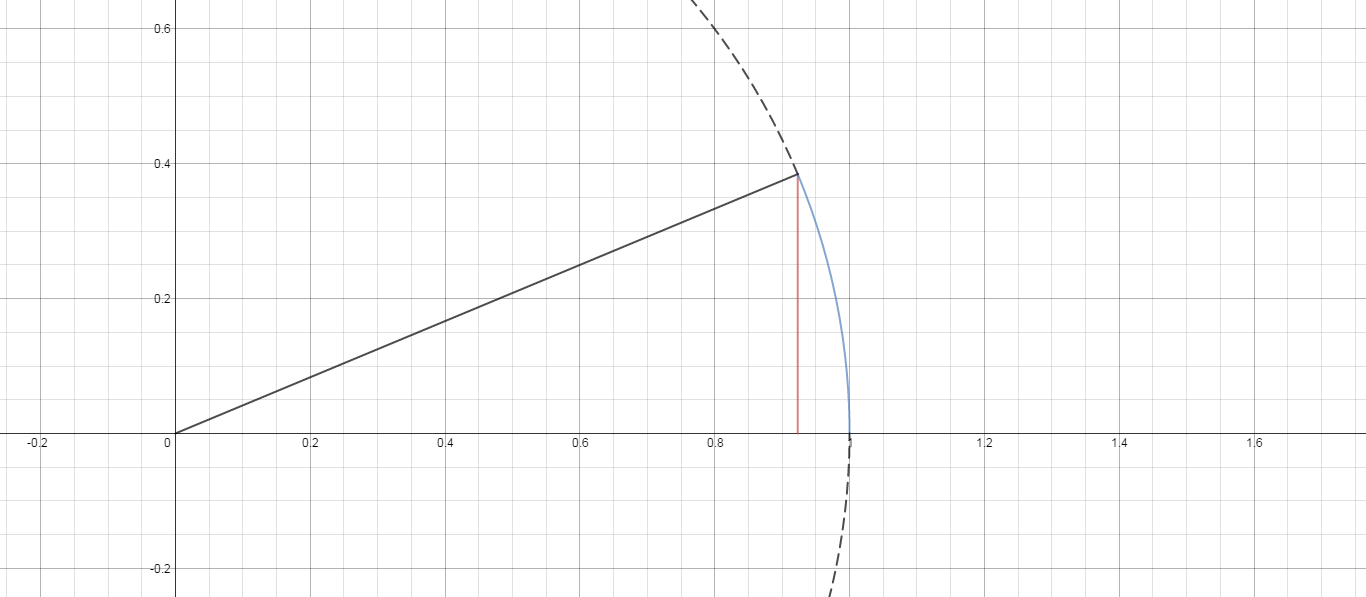



How Do You Use The Squeeze Theorem To Find Lim Sqrt X Sin 1 X As X Approaches Infinity Socratic
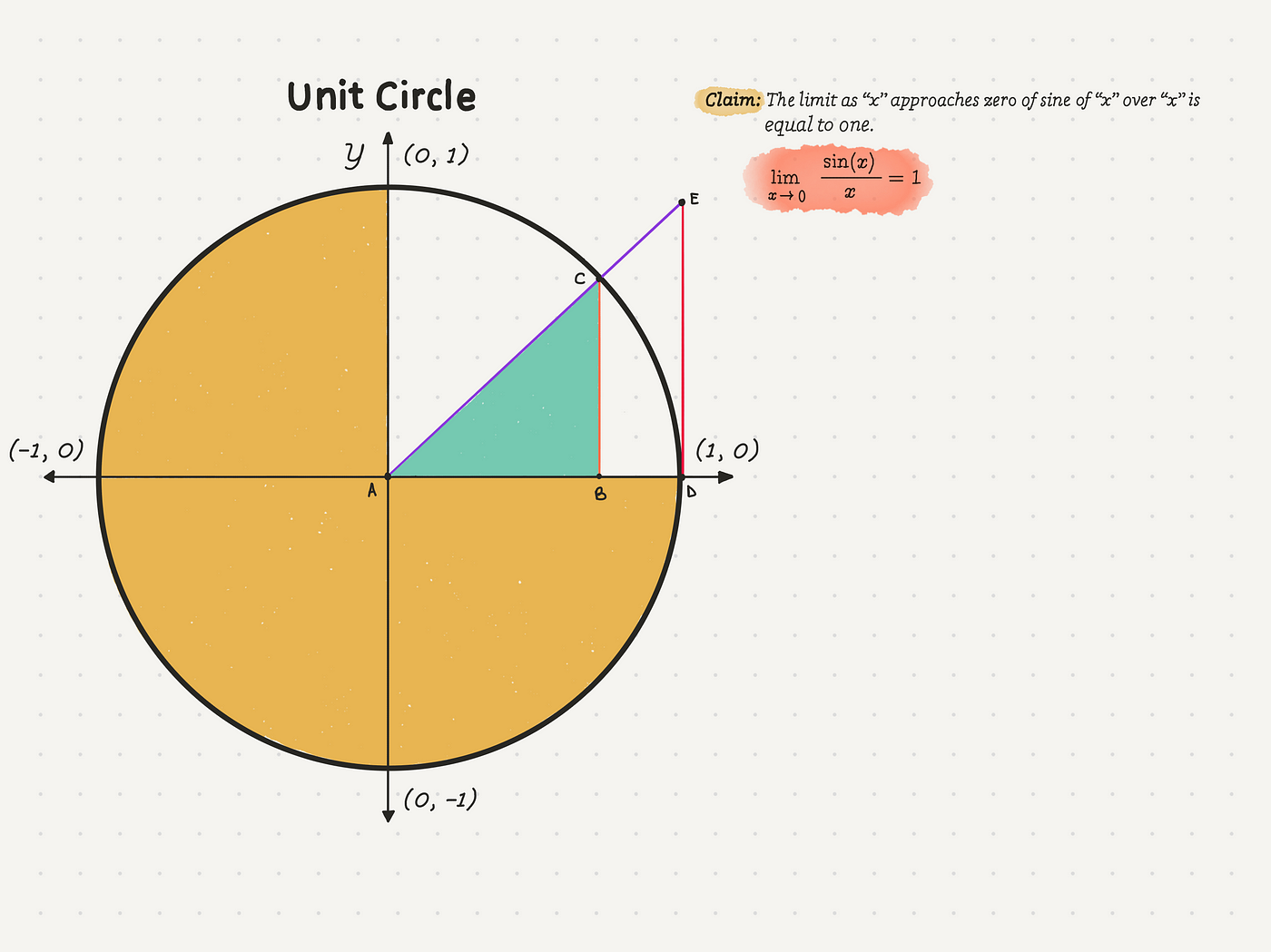



A Beautiful Proof Why The Limit Of Sin X X As X Approaches 0 Is 1 By Ali However Mathematics Medium
L'Hopital's Rule lim x → a f ( x) g ( x) lim x → a f ( x) g ( x) = f ( a) g ( a) lim x → 3 x 2 1 x 2 = 10 5 = 2 But what happens if both the numerator and the denominator tend to 0?We are going to show the following equality Firt of all, we definie u(x) = (1x)1 x u ( x) = ( 1 x) 1 x Two possibilities to find this limit First L'Hôpital's rule ( 1 x), g(x) = x g ( x) = x Which gives6Determine, by inspection, the limits lim x!1f(x), lim!0 f(x), lim f(x), lim x!1 f(x) and lim x!0 f(x) when they exist for the function f(x) = x 3 jxj Prove your assertions Solution For x>0, f(x) = x3 x = x 2 If (x n) is a sequence in (0;1) with x n!1, then f(x n) = x2 n!1 So lim x!1f(x) = 1 If (x n) is a sequence in (0;1) and x n!0




Limit Of Sinx X Without Taylor Series Or Areas Mathematics Stack Exchange




Prove That Mathop Lim Limitsx To 0 Dfracsin Xx 1 X Class 11 Maths Cbse
Extended Keyboard Examples Upload Random Compute answers using Wolfram's breakthrough technology & knowledgebase, relied on by millions of students & professionals For math, science, nutrition, history, geography, engineering, mathematics, linguistics, sports, finance, musicLim x → 0 sin x x = 1 Proof of Fact 1 This can be obtained with a geometric argumentsqueeze theorem, which you can google Let us use this to show the following lemma Lemma 1 lim x → 0 1 − cos x x 2 = 1 2 Proof of Lemma 1 lim x → 0 1 − cos x x 2 = lim u → 0 1 − cos (2 u) (2 u) 2 (relabel " x " with " 2− x 6 7!



What Is The Limit Of X Sin X And X Sin 1 X As X Approaches 0 Quora



What Is Solution For Lim X 0 X Tanx Sinx X Quora
⋯ (e q 1) T a k i n g c o m m o n t e r m {x} o u t, w e h a v e sin x = x (1 − x 2 3!Determining limits using the squeeze theorem Squeeze theorem intro Practice Squeeze theorem Limit of sin (x)/x as x approaches 0 This is the currently selected item Limit of (1cos (x))/x as x approaches 0Answer (1 of 3) Khan academy has done a good video on this, but he left out the proof of the Squeeze theorem which I am going to prove here By the way, here's the Khan academy video Limit of sin(x)/x as x approaches 0 (video) Khan Academy In



Prove That Lim X 0 Sinx X 1 Where X Being Measured In Radians Sarthaks Econnect Largest Online Education Community
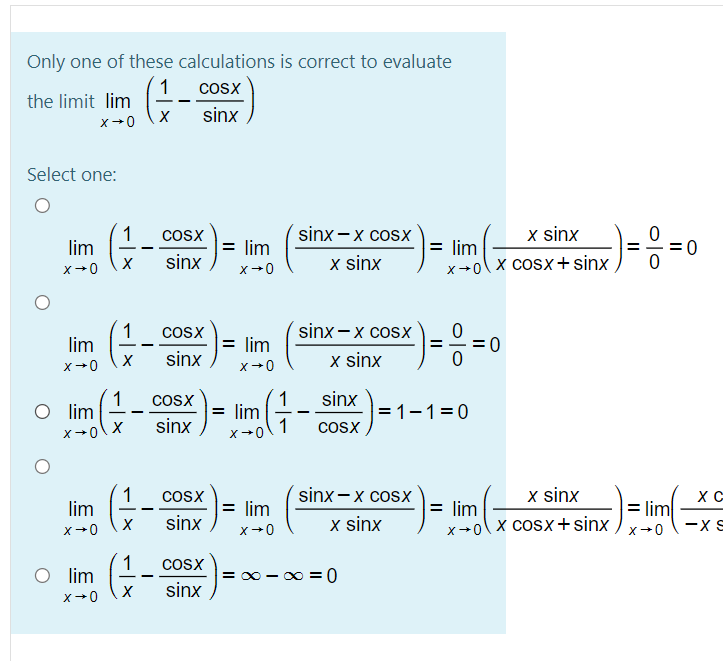



Answered Only One Of These Calculations Is Bartleby
So the challenge is to find upper and lower bounds for x sinx Consider We have {Area of Δ KOA} ≤ {Area of Sector KOA} ≤ {Area of Δ LOA} ∴ sinx 2 ≤ x 2 ≤ tanx 2 Multiplying by 2 sinx gives 1 ≤ x sinx ≤ 1 cosx ∴ lim x→0 1 ≤ lim x→0 x sinx ≤ lim x→0 1 cosx ∴ 1 ≤ lim x→0 xWe have to keep in mind some points while evaluating the limitsSuppose while evaluating a function where lim x>a f(x)/g(x) exists such that f(x) = 0 and G(x) = 0 Then inShowing that the limit of sin (x)/x as x approaches 0 is equal to 1 If you find this fact confusing, you've reached the right place!



1




How Do You Prove Lim X 0 Sin X X 1 Without Using L Hopital S Rule Or The Derivative Of Sin X At All Socratic
Transcript Ex 131, 14 Evaluate the Given limit lim┬(x→0) sin〖ax 〗/(sin bx), a, b ≠ 0 (𝑙𝑖𝑚)┬(𝑥→0) 𝑠𝑖𝑛〖𝑎𝑥 〗/(𝑠𝑖𝑛 𝑏𝑥) = (𝑙𝑖𝑚)┬(𝑥→0) sin ax × (𝑙𝑖𝑚)┬(𝑥→0) 1/𝑠𝑖𝑛𝑏𝑥 Multiplying & dividing by ax = (𝒍𝒊𝒎)┬(𝒙→𝟎) 𝒔𝒊𝒏𝒂𝒙/𝒂𝒙 × (𝑙𝑖𝑚How to prove the limit of sin(x)/x = 1 as x approaches 0 using the squeeze theoremBegin the proof by constructing various points using the unit circle to seHence we have lim x → 0 cos x = lim x → 0 1 = 1, so by the squeeze theorem, lim x → 0 f (x) = 1 On the other hand, if x ∈ parenleftbigg − π 2, 0 parenrightbigg, then f (x) = sin x − x and we have − sin x ≥ − x ≥ − tan x = − sin x cos x = ⇒ − cos x sin x ≤ − 1 x ≤ − 1 sin x = ⇒ − cos x ≤ − sin x




Limit Of Sin X Two Questions About This Proof Mathematics Stack Exchange



What Is Limit X 0 Sinx X Quora
How to prove that limit of lim (1x)^ (1/x)=e as x approaches 0 ?Then how come lim x>0 sinx/x =0?Using Maclaurin Series expansion is a bit straightforward here Though, as requested, we can expand it using the procedure as follows lim x → 0 sin x x = lim x → 0 x − x 3 3!




Why Limit Of Sinx X 1 Hindi Proof Of Sinx X 1 Limit Of Sin X X As X Approaches 0 Limits Youtube




Prove Lim Sin 1 X As X Tends To 0 Does Not Exist Math Help Forum
I'd like to see a proof that lim x>0 x/sinx = 1 Homework Equations It is given that lim x>0 sinx/x = 1 The Attempt at a Solution /B I can confirm this limit quite easily by graphing the curve obviously approaches one, and the left and righthanded limits are equalGet stepbystep solutions from expert tutors as fast as 1530 minutes Your first 5 questions are on us!Be able to use lim x!0 sinx x = 1 or lim x!0 1 cosx x = 0 to help nd the limits of functions involving trigonometric expressions, when appropriate Understand the squeeze theorem and be able to use it to compute certain limits PRACTICE PROBLEMS Evaluate the following limits If a limit does not exist, write DNE, 1, or 1 (whichever is most



L Hopital S Rule




Calculus Solving Trig Limits
How do you prove lim x tends to 0 sinx/x using expansion?




Prove Inequality Arccos Left Frac Sin 1 Sin X 1 X Right Leq Sqrt Frac 1 X X 2 3 Mathematics Stack Exchange



How To Prove Lim X To 0 Sinx X Using Limit Definition Quora




Finding Lim X To 0 Frac 2 Sin X Sin 2x X Sin X Geometrically Mathematics Stack Exchange



How Would I Prove Math Lim X To 0 Frac Sin X X 1 Math Without Using L Hopital S Rule Quora




Lim As X Approaches 0 Sin X 2x Youtube




Lim Sin X X 1 As X Goes To 0 Youtube



Squeeze Theorem




How To Prove That Lim Limits X To0 Frac Sin X X 1 Mathematics Stack Exchange
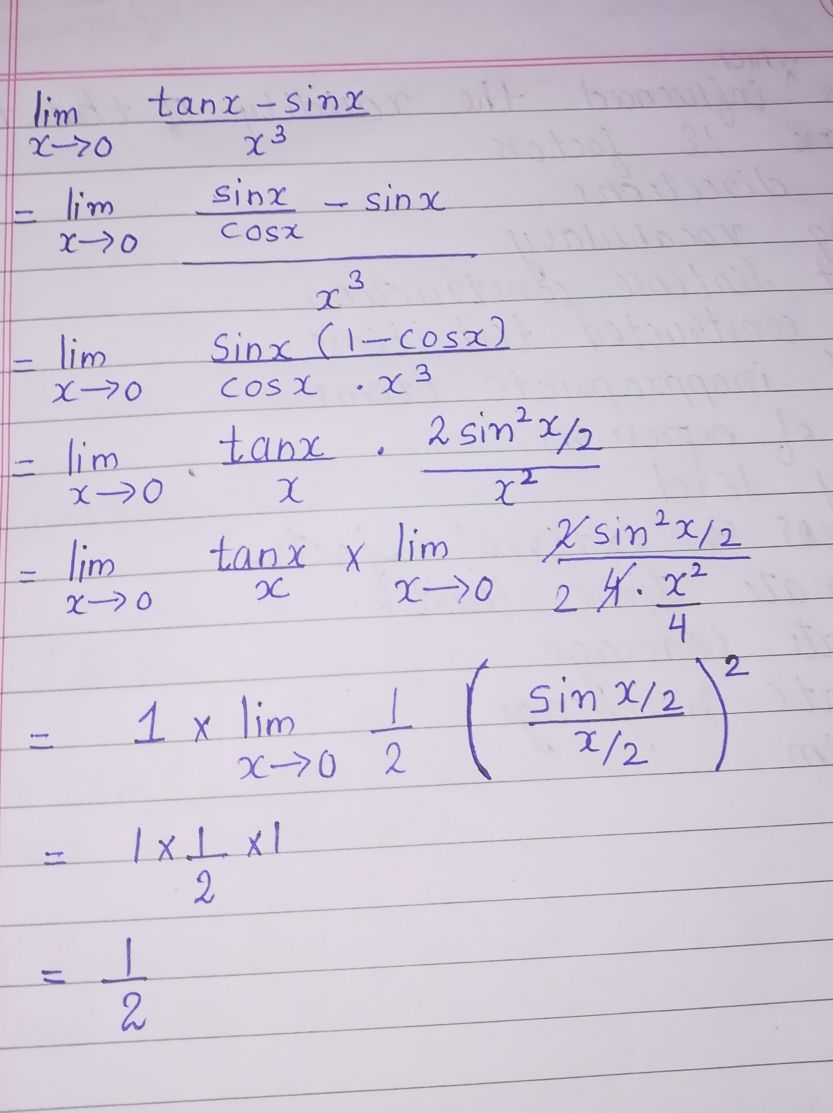



Lim X 0 Tan X Sin X X 3 Can You Explain This Question In Shortcut Way Mathematics Topperlearning Com Tz55xigg



Prove That Lim X 0 Sinx X 1 Sarthaks Econnect Largest Online Education Community




Proof Lim X 0 Sin X X 1 Calculus Youtube



Find The Limit As X Goes To 0 Of Cos Sin X Cos X X4 Stumbling Robot
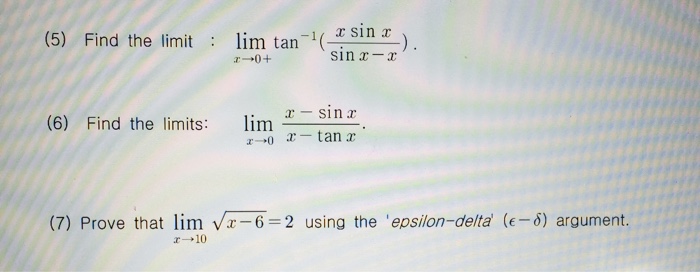



Solved Find The Limit Lim X 0 Tan 1 X Sin X Sin X Chegg Com



How To Show That Lim X 0 Sinx X 0 Quora




Difficulties Understanding A Proof Of Int 0 Infty Frac Sin X X Dx Frac Pi 2 Mathematics Stack Exchange




U3 L2 Limits Of Primary Trig Functions Ppt Download



Prove That Lim X 0 Sinx X 1 Where X Is Measured In Radi Sarthaks Econnect Largest Online Education Community



Prove That Lim X 0 Sinx X 1 Where X Being Measured In Radians Sarthaks Econnect Largest Online Education Community




Why Sin X X Tends To 1




A Beautiful Proof Why The Limit Of Sin X X As X Approaches 0 Is 1 By Ali However Mathematics Medium
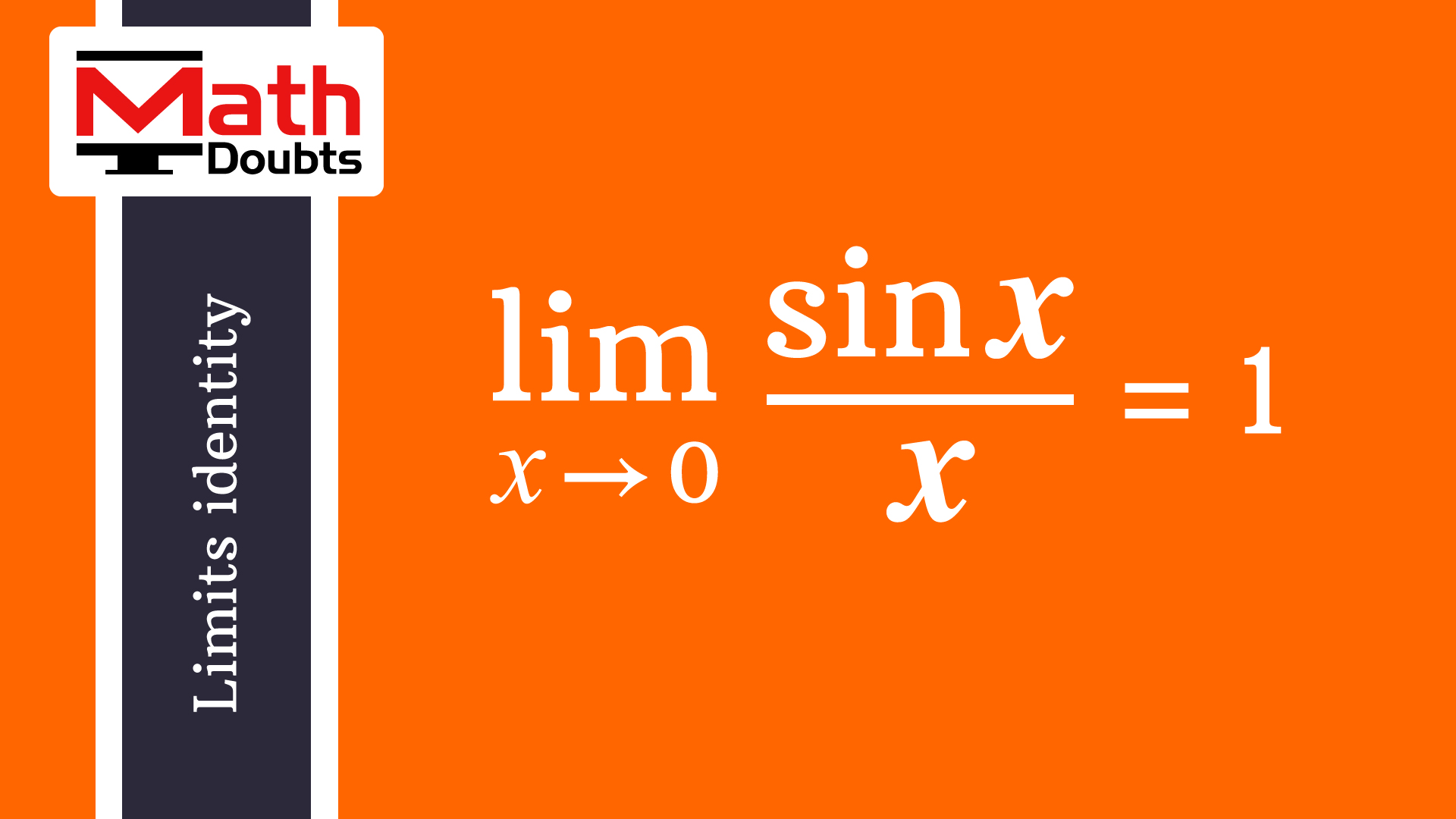



Lim X 0 Sinx X Formula



What Is The Value Of Lim X 0 Sinx X 1 X Quora




Proof Of Lim Of Sinx X 1 As X Approaches 0 Youtube




Derivatives Of Trigonometric Functions Ppt Download




Prove The Limit As X Approaches 0 Of 1 Cos X X Youtube




Prove That Lim X Gt 0 Sin X X 1 Brainly In




Limit Of Sin X Over X As X Approaches 0 Youtube
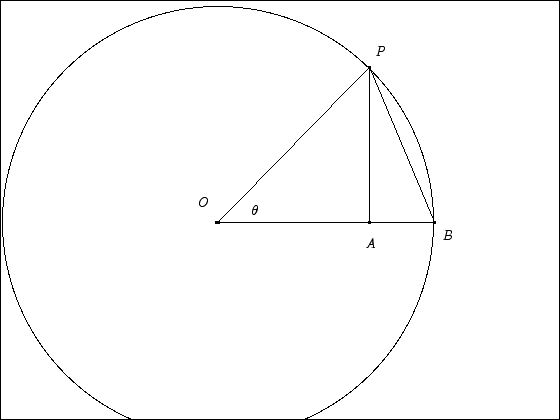



043trigderivatives Lbz




Limit Of Sin X X As X Approaches 0 Video Khan Academy



Prove That Lim X 0 Sinx X 1 Where X Being Measured In Radians Sarthaks Econnect Largest Online Education Community



Calculus Limits




Prove That Lim X Gt 0 Sin X X 1 Brainly In




Prove The Limit As X Approaches 0 Of Sin X X Youtube




Limit Of Trigonometric Function Lim X 0 Sin7x Sinx Sin6x Youtube




Why Does The Inequality 0 Cos X Sin X X 1 Hold True In The Interval 𝛑 2 𝛑 2 Mathematics Stack Exchange
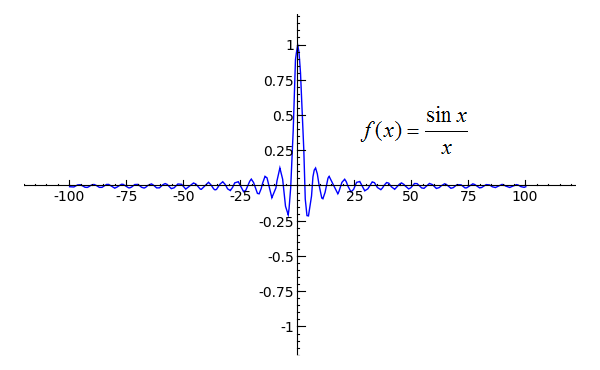



Sage Calculus Tutorial Limits At Infinity
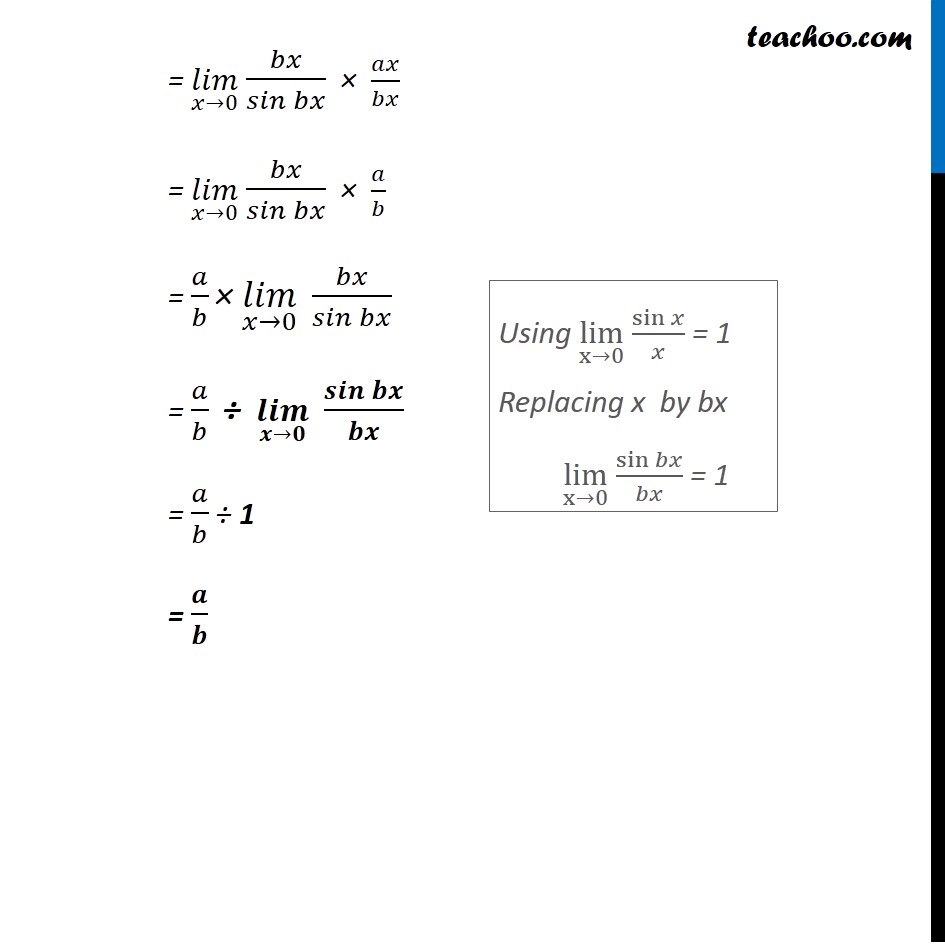



Ex 13 1 14 Evaluate Lim X 0 Sin Ax Sin Bx Class 11 Cbse




Prove Lim Sin X X 1 As X Approaches 0 Squeeze Theorem Youtube




Derivatives Of Trigonometric Functions Ppt Download



What Is The Lim Sinx X 1 X 2 When X 0 Quora




Lim Sin X X 1 As X Goes To 0 Youtube
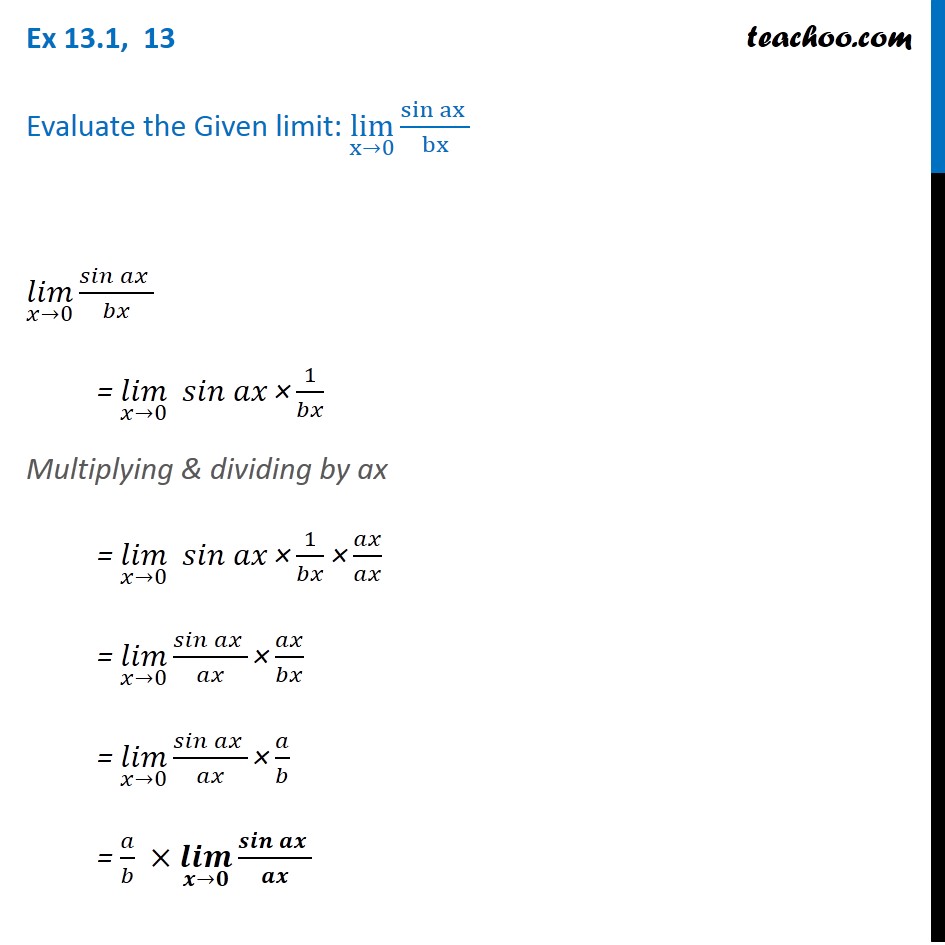



Ex 13 1 13 Evaluate Lim X 0 Sin Ax Bx Chapter 13 Limits



How To Prove Lim X Tends To 0 Sinx X Using Expansion Quora




Sandwich Theorem And Trigonometric Functions Proof Videos Examples



What Is The Value Of Lim X 0 Sinx X 1 X Quora
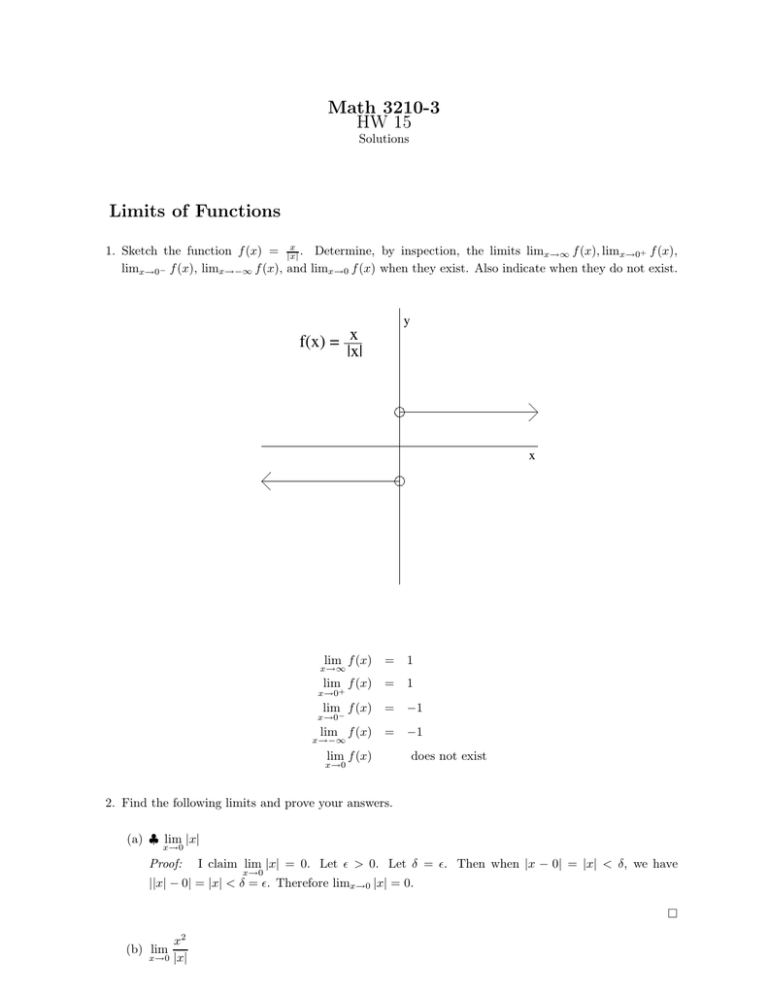



Math 3210 3 Hw 15 Limits Of Functions




Proof Of Limit Of Sin X X 1 As X Approaches 0 Math Linux Com
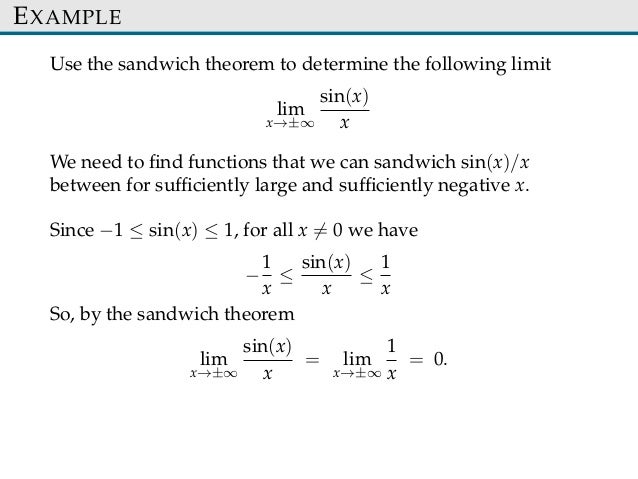



Limite Functions Sect22 24



What Is Lim Sinx X As X Approaches 0 Quora



Why Does Math Lim Limits X To 0 Frac Sin X X 1 Math Quora




Limit Of 1 Cos X X As X Approaches 0 Video Khan Academy



How To Show That Lim X 0 Sinx X 0 Quora
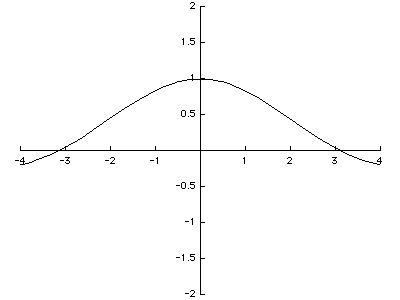



043trigderivatives Lbz




The Value Of Lim X Gt0 Sinx X Is Where Denotes Greatest Integer Function Youtube




Derivatives Of Trigonometric Functions Ppt Download




Limit X To 0 Of X Sinx X 3 Youtube



Prove That Lim X 0 Sinx X 1 Sarthaks Econnect Largest Online Education Community




Trigonometric Limits




File Sinx X Limit Proof Png Wikimedia Commons




Proof Of The Derivative Of Sin X Video Khan Academy




Proof Lim X 0 Sin X X 1 Victoriee Academy




How To Prove That Lim Limits X To0 Frac Sin X X 1 Mathematics Stack Exchange




Prove That Lim X 0 Sin 1x X 1



2



What Is Solution For Lim X 0 X Tanx Sinx X Quora
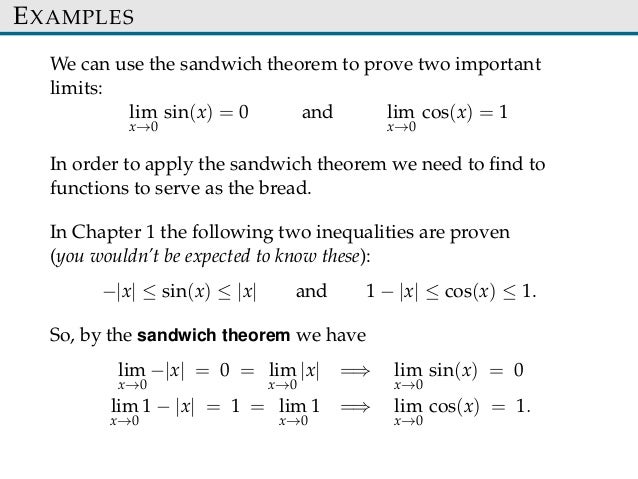



Limite Functions Sect22 24




Evaluate Limit As X Approaches Infinity For Sinx Over X Youtube




How To Prove That Lim Limits X To0 Frac Sin X X 1 Mathematics Stack Exchange



0 件のコメント:
コメントを投稿